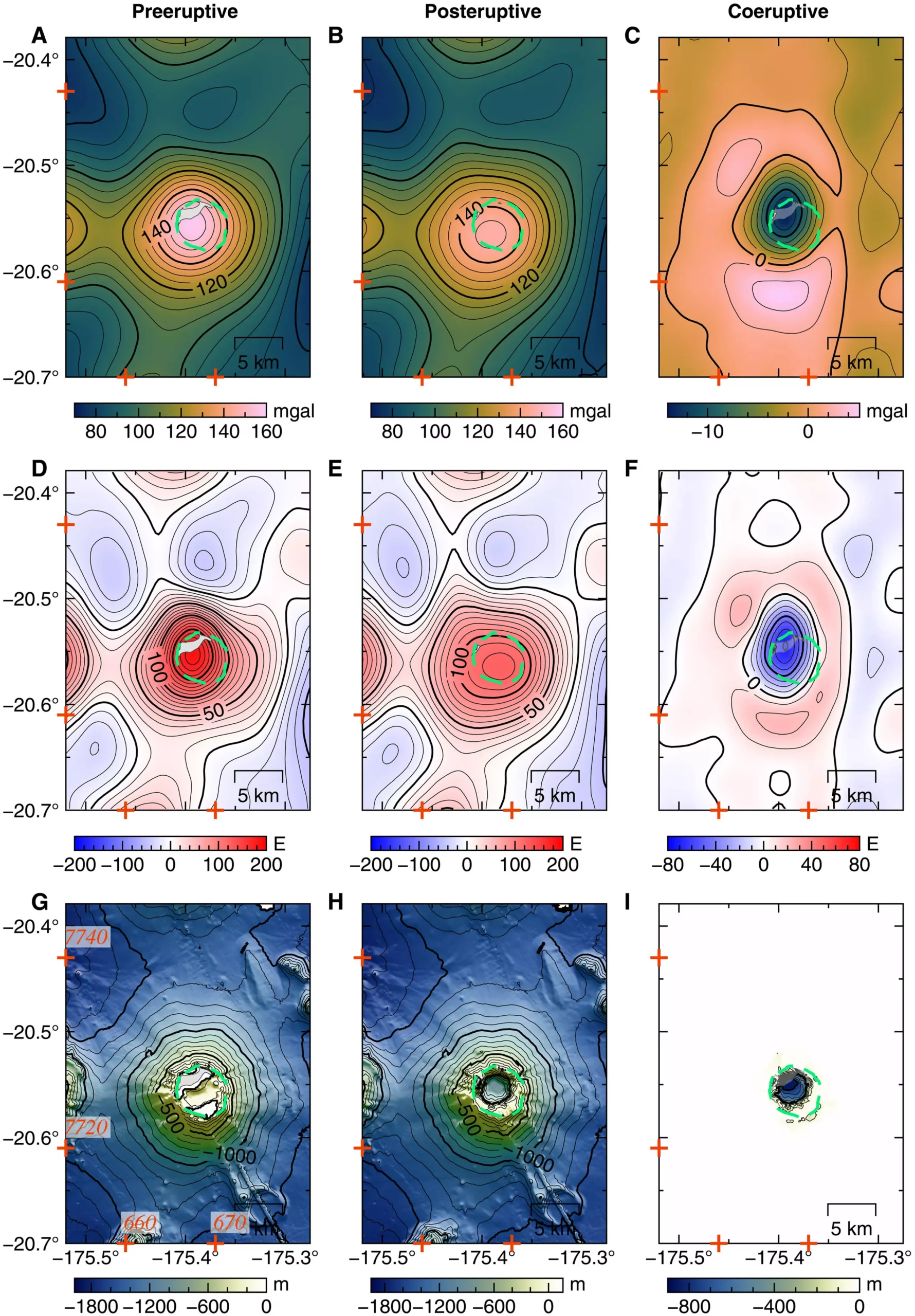Volcanoes are majestic natural phenomena that often leave us in awe of their power and beauty. The 2022 eruption of the Hunga volcano, located in the South Pacific, was no exception. This massive eruption not only led to the collapse of its caldera but also resulted in a tsunami that reached the shores of both the U.S. and Japan. Uncovering the secrets of this underwater volcano has proven to be a challenging task for scientists, but a small team of researchers from various institutions has made significant progress in understanding the magmatic system state beneath the Hunga volcano.
Studying an underwater volcano presents unique challenges, especially when it comes to deploying conventional sonar equipment. Recognizing this obstacle, the research team took an innovative approach to gain insights into the magma chambers hidden beneath the Hunga volcano. Instead of using sonar, they turned to satellite data that could measure small differences in sea levels. These variations in sea levels above a volcano are indicative of the presence of magma within chambers, offering valuable information about its quantity and size.
Mapping the Magma Chambers
To create a comprehensive understanding of the magmatic system under the Hunga volcano, the scientists analyzed data from satellite radar pulses and multibeam bathymetry. By combining these two distinct data sources, they successfully mapped the magma chambers beneath the volcano both before and after the eruption. This approach allowed them to compare the two maps and gain insights into the changes that occurred due to the eruption.
The research team’s analysis revealed the existence of three distinct pockets of magma beneath the Hunga volcano. Two of these pockets were found to be liquid, while the third appeared to be mostly solidifying mush. This finding highlights the complex nature of magma chambers and their dynamic behavior. Furthermore, the researchers determined that the majority of the erupted magma originated from a central chamber. Shockingly, approximately 30% of the contents from this chamber were expelled during the eruption, causing the caldera to collapse.
In their comprehensive analysis, the scientists also discovered evidence of a channel connecting the two liquid-filled chambers. This channel has played a crucial role in replenishing the magma lost from the central chamber. It acts as a conduit through which magma is transported, allowing for a continuous supply to sustain the volcanic activity. The presence of such a pathway sheds light on the mechanisms involved in the restocking process within the magmatic system.
This study marks a significant step forward in understanding the complex dynamics of the magmatic system beneath the Hunga volcano. The use of innovative satellite data has enabled scientists to gain valuable insights into the size and composition of magma chambers, as well as the aftermath of a massive eruption. Moreover, the researchers anticipate that continued analysis of satellite data will reveal even more intricate details about the chambers hidden beneath this underwater volcano.
The research conducted by the small team of geologists, volcanologists, and Earth scientists has unraveled some of the mysteries surrounding the Hunga volcano. By meticulously analyzing satellite data and creating partial maps of the magma chambers, they have shed light on the inner workings of this underwater volcano. The discoveries of multiple magma pockets, the role of a central chamber in an eruption, and the significance of a connecting channel are crucial steps towards comprehending the volcanic systems that shape our world. As our understanding continues to deepen, we move closer to mitigating the destructive forces of nature while marveling at its breathtaking power.



Leave a Reply